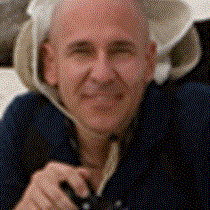Garner Beach and Punta Suarez, Espanola Island
As the light of the sun began to appear, we got ready for a day filled with lots of activities. We would be meeting some of the endemic and special animals of this island, considered the oldest above the surface of the ocean by many researchers.
Our first snorkeling outing in the Galápagos water showed different tropical fish and a new friend; it was a young sea lion that swam around a group of snorkelers. A few rays swam on the bottom and under some of the new explorers who could see many creatures that Charles Darwin himself never saw, as he never visited this island during his voyage around the Galápagos.
After snorkeling many decided to continue their exploration at Gardner Bay and found the most interesting mockingbirds of the Galápagos. These curious birds were probably as interested in these new visitors as they were interested in them. The most colorful lava lizards of the Galápagos were also present on this beautiful beach, some of them eating small flies every now and then. It was a very relaxing time, lying on the beach in a way similar to the sea lions, although we could not roll around the sand as well as they did, nor swim as gracefully.
During lunchtime we moved to a new location, Punta Suarez. All our expectations were fulfilled, including the chance to see some waved albatross that are endemic to this Island. It stayed sunny during the afternoon so it was important for all of us to drink plenty of water, as the early part of the walk was a little hot. Upon arrival to the island we could find some marine iguanas occasionally sneezing to get rid of some of the salts that they ingest when they eat the green algae that are their main source of food. As we kept walking in this uneven terrain we found Nazca boobies that were incubating eggs along the trail. Suddenly a Galápagos hawk landed on a nearby tree, and to make the scene even better, we could see some waved albatrosses flying above us.
During our visit to Punta Suarez, we were able to get an idea of the complete life cycle of the albatross. Some young chicks that were in the process of losing their down and getting feathers started to practice and began to wave their wings; they will get ready soon for the real decisive day, as in a few weeks most will have to try their first take-off: basically jumping off a cliff, opening their wings and letting nature to the rest, and start gliding over the ocean. Some of the young molting chicks had unique patterns on their bodies: on some the down looked like a 1980s punk rocker star haircut. These young albatrosses will not return to this island for a few years, but will wander around the southern Pacific Ocean. Then it will be time to come back to their homeland and try find and mate and, a few months later, start the whole lifecycle again as many generations have done before them.
Finally it was time to return to the National Geographic Endeavour, and as we started to get closer to our new home the sun began to set. It was a day with some work-outs, but worth it, as we enjoyed the unique beauty of this magnificent island.




